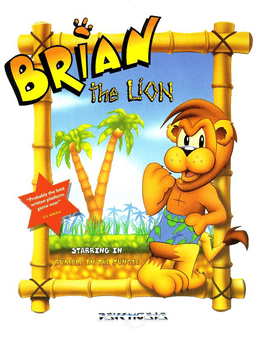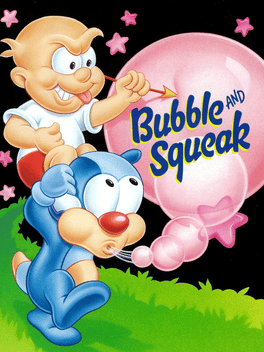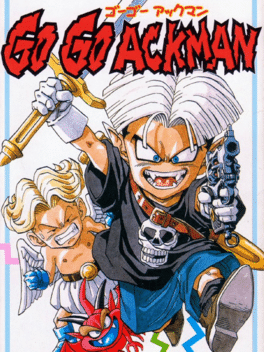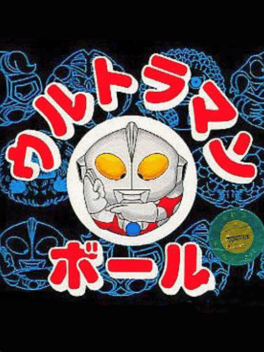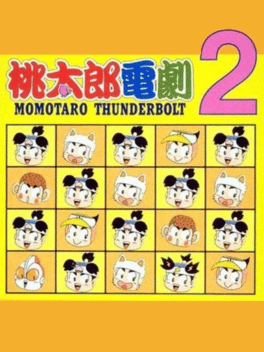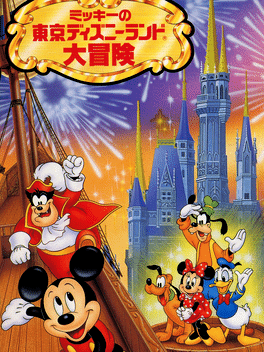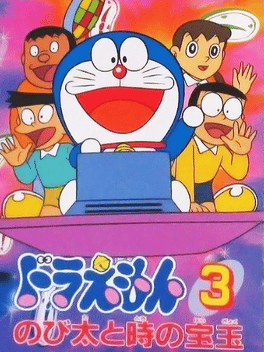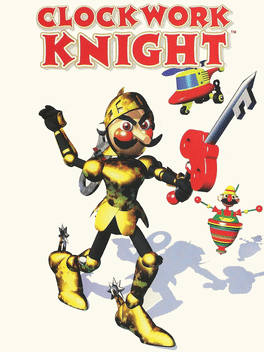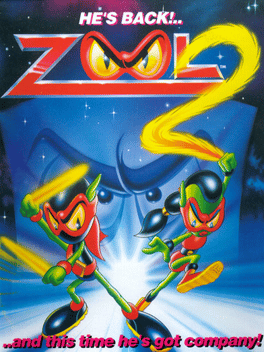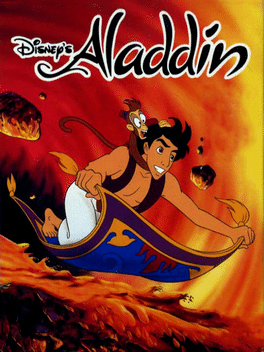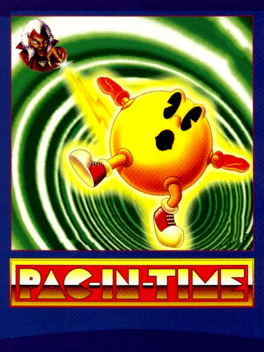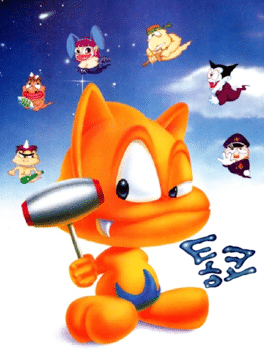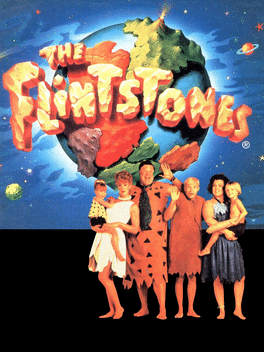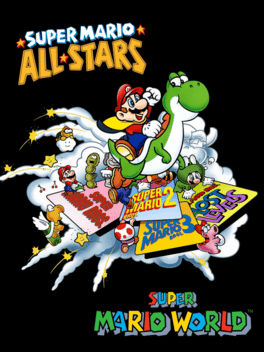New Ps2 Games - Page 210
-
Brian the Lion
1994
Brian the Lion
1994
If you can't stand the heat, stay out of the jungle... Meet the funkiest feline on two legs, Brian the Lion, starring in the wildest adventure ever to hit the Amiga! Brian's rumble in the jungle boasts hundreds of frames of character animation, megabytes of infectious music and a magnificent menagerie of console-style effects including zooming, sprite scaling, de-resolution and rotation. The scariest sight in Bermuda shorts this side of Baywatch, Brian the Lion pounces into action in a roaring romp that's so hot it's positively tropical. -
Daze Before Christmas
1994
In Daze Before Christmas, you're Santa. According to the game's Christmas calender, you have 24 areas to explore such as factories, workshops, caves, and more. Each area is filled with nasty enemies like penguins, jack-in-the-boxes, helicopters, snowmen, and many others. Furthermore, after every five areas, Santa has to come face-to-face with not only The Evil Snowman, The Timekeeper, and Louse the Mouse, but also Mr. Weather. -
Flink
1994
Flink
1994
star 7.2Disaster strikes Imagica Island and Wicked Wainwright's taken over! He's kidnapped the four island leaders, separated them, and has them under the watchful eyes of the Demon Guardians. Excited by his newfound control, he's gone absolutely crazy! He's casting dark clouds of smoke across the land, bringing unpleasant weather and much sadness to the people of Imagica. In a huge panic, the islanders appoint Flink, an apprentice wizard, to challenge Wicked Wainwright and to force the Demon Guardians to release the island leaders. Locate the leaders, bring their powers together, and help make Flink the full-fledged wizard he's always wanted to be! -
Bubble and Squeak
1994
Bubble and Squeak
1994
Bubble and Squeak starts off similarly to many other platform games. Controlling a bald child, you move through a scrolling array of ledges, avoiding contact with nasties who release coins when shot. There are hidden areas to find as well. Halfway through the first of the 30 levels, you meet Squeak and the full nature of the game starts. Squeak is a blue alien, who must also be guided through the levels. As he can't jump as high as you, he must sometimes be instructed to wait while you flick a switch or otherwise solve the puzzle of how to guide him through. If you stand on top of Squeak you can be launched into an extra-high jump. -
Go Go Ackman
1994
Go Go Ackman
1994
star 6.9Go Go Ackman is a scrolling platformer starring the titular Ackman. Ackman can punch and charge up a ranged wave of energy, and he can also jump on some enemies to stun them before running into them and turning them into a sliding projectile. Ackman can hold up to three bombs that can clear the screen of enemies, and can also hold a weapon, either a sword, boomerang, or pistol, but it will be lost if Ackman is hit. Levels are linear, but do allow some exploration to find weapons and items hidden off the beaten road. Go Go Ackman was created by famous mangaka Akira Toriyama, known for his work on Dragon Ball as well as games such as Chrono Trigger and Dragon Quest. -
Ultraman Ball
1994
Ultraman Ball
1994
Ultraman Ball is a 2D platformer for the Nintendo Game Boy and features the Tsuburaya Productions tokusatsu character Ultraman and his companions. Ultraman is re-imagined as a hero who is able to transform into a ball mode, and uses this new power to save his friends. -
Mickey no Tokyo Disneyland Daibouken
1994
star 6.8Mickey has taken a trip to Tokyo Disneyland. But when he arrives, he finds out from Minnie that his friends have been kidnapped and the park has been hijacked by none other than Pete. Armed with nothing but a combo water/helium backpack and some balloons, Mickey must trek through the different sections of the park to rescue his friends, held captive in some of the park's most iconic attractions, and stop Pete. -
Doraemon 3: Nobita to Toki no Hougyoku
1994
Doraemon 3: Nobita to Toki no Hougyoku is an Action game, developed by AIM and published by Epoch, which was released in Japan in 1994. -
Clockwork Knight
1994
Clockwork Knight
1994
star 6.2Clockwork Knight is a 2.5D side-scrolling platformer where you play as the toy soldier Sir Tongara de Pepperouchau III. The game offers a combination of pre-rendered 3D graphics and 3D environment. The game has four rooms Pepper must traverse; Betsy's room, Kevin's room, Kitchen and Attic, each containing two levels and a boss fight at the end, with a total of five bosses and eight levels. -
Zool 2
1994
Zool 2
1994
star 7.8The intergalactic gremlin ninja Zool returns, and this time his enemies in the game were named Krool and his assistant Mental Block, whose goal is to stifle the world's imagination, causing rampant boredom. In his fight Zool is aided by his female companion, named Zooz (in a red costume), and his faithful dog Zoon. The ending contained a hint at a possible further sequel -
The Adventures of Mighty Max
1994
The Adventures of Mighty Max is based on the TV cartoon Mighty Max which in turn is based on a series of toys. Max is a kid who possesses a magic cap that allows you to travel across different world and to save people who get in trouble in other dimensions. But his archenemy, the demonic Skull Master, has recently locked all the portals Max was using for inter-dimensional travel. However, the Skull Master has kept some of the portals for himself, keeping there some of his destructive weapons. It's time to destroy those weapons and to stop Skull Master! This is a platform game in which you control Max himself or one of his two side-kicks (that doesn't influence the gameplay). You travel through several different worlds. Your goal is to find Skull Master's weapons, which are scattered around the level, and to destroy them. The levels are timed, and there are also plenty of enemies who will disturb you on your way to the goal. -
Disney's Aladdin
1994
Disney's Aladdin
1994
The player controls Aladdin, who must make his way through several levels based on locations from the movie: from the streets and rooftops of Agrabah, the Cave of Wonders and the Sultan's dungeon to the final confrontation in Grand Vizier Jafar's palace. The Sultan's guards and also animals of the desert want to hinder Aladdin in his way. He can defend himself with his sword or by throwing apples. Next to apples, Aladdin can also collect gems which can be traded for lives and continues with a traveling trader. Finding Genie or Abu icons enables bonus rounds. The Genie bonus round is a game of luck played for apples, gems or extra lives. In Abu's bonus round, the player controls the little monkey who has to catch bonus items that fall from the sky, but without touching any of the unwanted objects like rocks and pots. -
Pac-In-Time
1994
Pac-In-Time
1994
The SNES version of Pac-In-Time, despite using the same basic gameplay mechanics, is an entirely new game using a different game engine and aesthetic. -
Pac-In-Time
1994
Pac-In-Time
1994
star 6.5Everybody knows what/who Pac-Man is from his heyday in the '80s, but this time, we're getting a whole new adventure of our little eater. Guess his stomach is full, 'cause there's nothing much to eat here, only collecting points. This is much like some Indiana Jones adventure, only your little hero's Pac-Man instead of Harrison Ford. Pac-in-time is the US release of Fury of the Furries. It's exactly the same game. Only the characters were changed: the not-so-known European Tinies (from the Skweek/Super Skweek/Tiny Skweeks/Brainies/Tinies games) were replaced by the widely known Pac-Man. -
Jazz Jackrabbit: Holiday Hare 1994
1994
The first game in a series of Christmas-themed Jazz Jackrabbit releases. Jazz Jackrabbit: Holiday Hare 94 is a special shareware release of the first Jazz Jackrabbit title, released in December 1994. This release of the game features a unique christmas-themed level. This Holiday Hare episode was later retroactively added on subsequent prints of the CD-ROM version as Episode X. -
Tonko
1994
-
The Flintstones: The Movie
1994
A Flintstones platformer game based on the 1994 film. The game was released for the SNES, Game Boy and Sega Genesis (Sega Channel exclusive). -
Super Mario All-Stars + Super Mario World
1994
star 9.5Put quite simply, this is the amalgamation of the previously released Super Mario All-Stars compilation with Super Mario World added. While games already in the All-Stars bundle have major graphical and audio improvements, the only change made to Super Mario World is a slight tweak of Luigi's graphic sprites, making him slightly thinner and taller (rather than being the same height and stature of Mario) which does not affect gameplay.
